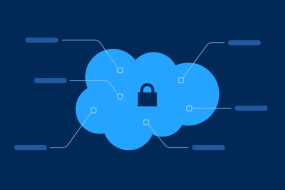
In today’s digital age, where technology permeates every aspect of our lives, the need for robust cybersecurity measures has never been more pressing. However, amidst the complex array of threats, one tactic stands out as particularly insidious: social engineering attacks. These attacks prey not on the vulnerabilities of systems, but on the vulnerabilities of human psychology. In this comprehensive guide, we delve into the concept of human-centric security and how it empowers users to defend against social engineering attacks effectively.
Understanding Social Engineering Attacks
Social engineering attacks involve manipulating individuals into divulging confidential information or performing actions that compromise security. These attacks exploit psychological principles such as trust, authority, and urgency to deceive targets successfully. Common tactics include phishing emails, pretexting, baiting, and tailgating.
The Psychology Behind Social Engineering
Social engineers leverage various psychological techniques to manipulate human behavior. They exploit cognitive biases, such as the tendency to trust authority figures or the fear of missing out, to deceive targets. Understanding these psychological vulnerabilities is crucial for developing effective defense strategies.
Recognizing Common Social Engineering Tactics
To defend against social engineering attacks, users must familiarize themselves with common tactics employed by malicious actors. These tactics often involve creating a sense of urgency or fear to prompt immediate action, such as clicking on a malicious link or disclosing sensitive information.
The Rise of Human-Centric Security
Traditional security measures focus primarily on safeguarding systems and networks, often overlooking the human element. Human-centric security adopts a holistic approach that places users at the center of cybersecurity strategies. By understanding human behavior and addressing psychological vulnerabilities, organizations can enhance their security posture significantly.
Empowering Users Through Education and Awareness
Education and awareness are fundamental pillars of human-centric security. By providing users with comprehensive training on cybersecurity best practices and raising awareness about social engineering tactics, organizations can empower individuals to recognize and respond effectively to threats.
Implementing Behavioral Analysis Techniques
Behavioral analysis techniques, such as monitoring user interactions and identifying deviations from normal behavior patterns, play a crucial role in human-centric security. By analyzing user behavior in real-time, organizations can detect suspicious activities indicative of social engineering attacks and take proactive measures to mitigate risks.
Leveraging Technology to Enhance Security
While human-centric security emphasizes the importance of addressing human factors, technology remains a vital component of cybersecurity defenses. Advanced technologies such as artificial intelligence and machine learning can augment human capabilities by providing real-time threat intelligence and automating response mechanisms.
Role of AI in Detecting Social Engineering Attacks
Artificial intelligence (AI) plays a pivotal role in detecting and mitigating social engineering attacks. AI-powered solutions can analyze vast amounts of data to identify patterns indicative of malicious behavior, enabling organizations to preemptively block threats and protect against evolving attack vectors.
Implementing Multi-Factor Authentication (MFA)
Multi-factor authentication (MFA) is a critical security measure that adds an extra layer of protection against social engineering attacks. By requiring users to verify their identity through multiple factors such as passwords, biometrics, or tokens, organizations can significantly reduce the risk of unauthorized access.
The Importance of Collaboration and Communication
Effective cybersecurity requires collaboration and communication across all levels of an organization. From senior leadership to frontline employees, everyone has a role to play in maintaining a secure environment. By fostering a culture of security awareness and encouraging open communication, organizations can strengthen their defenses against social engineering attacks.
Building a Security-Conscious Culture
Creating a security-conscious culture starts with leadership commitment and trickle-down effect. When leaders prioritize cybersecurity and communicate its importance to employees, it fosters a sense of collective responsibility for security. Regular training sessions, security awareness campaigns, and open channels for reporting suspicious activities further reinforce this culture.
Encouraging Vigilance and Reporting
Vigilance is the cornerstone of effective threat detection. Encouraging employees to remain vigilant and report any suspicious activities or potential security threats ensures timely response and mitigation. Establishing clear reporting procedures and providing channels for anonymous reporting can help overcome barriers to reporting.
Final Words
In conclusion, human-centric security offers a proactive approach to defending against social engineering attacks by focusing on the human element of cybersecurity. By understanding the psychology behind these attacks, empowering users through education and awareness, leveraging advanced technologies, and fostering a culture of collaboration and communication, organizations can enhance their resilience to social engineering threats. In an increasingly interconnected world, prioritizing human-centric security is paramount to safeguarding sensitive information and preserving trust in the digital ecosystem.
Commonly Asked Questions
Q1. How prevalent are social engineering attacks?
Social engineering attacks are alarmingly prevalent, with studies showing that over 90% of successful cyberattacks involve some form of social engineering.
Q2. What are some red flags to watch out for in social engineering attempts?
Common red flags include unsolicited requests for sensitive information, urgent or threatening language, and inconsistencies in communication or branding.
Q3. How can organizations ensure user compliance with security protocols?
Organizations can promote user compliance through regular training, clear communication of security policies, and implementing measures such as MFA to enforce secure authentication.
Q4. What role does employee education play in mitigating social engineering risks?
mployee education is critical in mitigating social engineering risks as it equips individuals with the knowledge and skills to recognize and respond appropriately to potential threats.
Q5. How can organizations measure the effectiveness of their human-centric security strategies?
Organizations can measure the effectiveness of their human-centric security strategies through metrics such as the reduction in successful social engineering attacks, employee engagement in security training, and the overall security posture of the organization.
Advertisement








